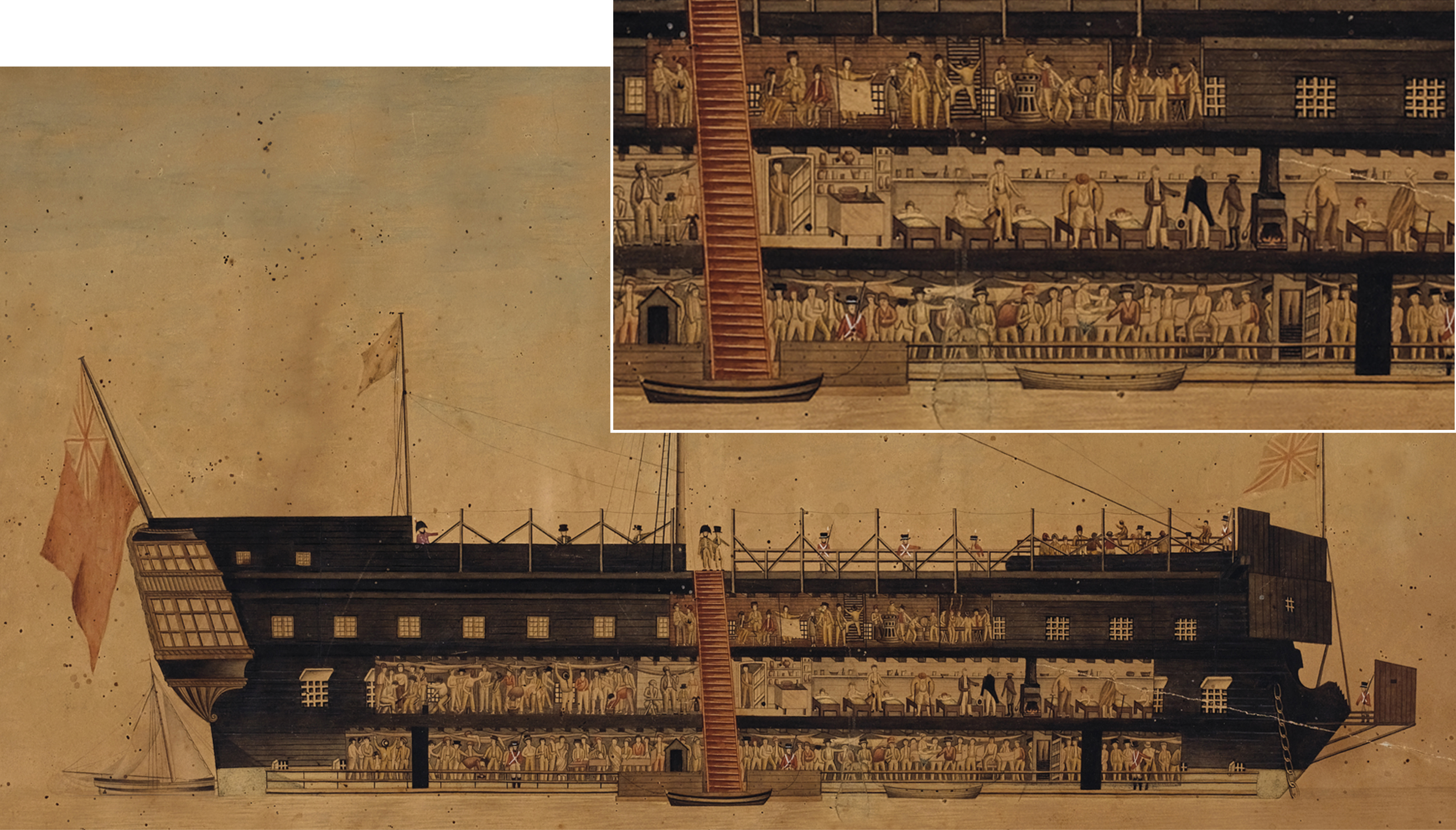The American Promise:
Printed Page 179
The American Promise Value
Edition: Printed Page 171
Chapter Chronology
Prisoners of War
The poor handling of loyalists as traitors paled in comparison to the handling of American prisoners of war by the British. Among European military powers, humane treatment of captured soldiers was the custom, including adequate provisions (paid for by the captives’ own government) and the possibility of prisoner exchanges. But British leaders refused to see American captives as foot soldiers employed by a sovereign nation. Instead they were traitors, to be treated worse than common criminals.
The 4,000 American prisoners taken in the fall of 1776 were crowded onto two dozen vessels anchored in the river between Manhattan and Brooklyn. The largest ship, the HMS Jersey, was a broken-down hull built to house a crew of 400 but now packed with more than 1,100 prisoners. Survivors described the dark, stinking space below decks where more than half a dozen men died daily. A twenty-year-old captive seaman described his first view of the hold: “Here was a motley crew, covered with rags and filth; visages pallid with disease, emaciated with hunger and anxiety, . . . and surrounded with the horrors of sickness and death.” The Continental Congress sent food to the prisoners, but most was diverted to British use, leaving General Washington fuming.

A British Prison Ship A carefully executed cutaway drawing of a prison ship shows scores of American POWs below decks being guarded by redcoats. The degree of crowding and of care—note the infirmary on the middle level to the right of the gangplank (see inset)—is represented as more humane than was actually the case. The artist added these words in French beside the drawing: “My God, Have you forgotten me?” Museum of the City of New York/ The Art Archive at Art Resource, NY
Treating the captives as criminals potentially triggered the Anglo-American right of habeas corpus, a thirteenth-century British liberty that guaranteed every prisoner the right to challenge his detention before a judge and to learn the charges against him. To remove that possibility, Parliament voted in early 1777 to suspend habeas corpus specifically for “persons taken in the act of high treason” in any of the colonies.
Despite the prison-ship horrors, Washington insisted that captured British soldiers be treated humanely. From the initial group of Hessians taken on Christmas 1776 to the several thousands more soldiers captured in American victories by 1778, America’s prisoners of war were gathered in rural encampments. Guarded by local townsmen, the captives typically could cultivate small gardens, move about freely during the day, and even hire themselves out to farmers suffering wartime labor shortages. Officers with money could purchase lodging with local families and mix socially with Americans. Many officers were even allowed to keep their guns as they waited for prisoner exchanges to release them.
Such exchanges were negotiated when the British became desperate to regain valued officers and thus freed American officers. Death was the most common fate of ordinary American soldiers and seamen. More than 15,000 men endured captivity in the prison ships, and two-thirds of them died, a number double those who died in battle (estimated to be around 5,000). News of the horrors of the British death ships increased the revolutionaries’ resolve and convinced some neutrals of the necessity of the war.
